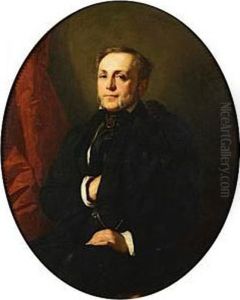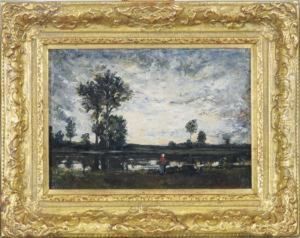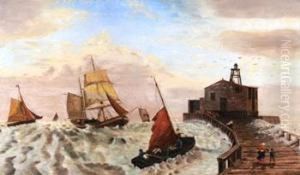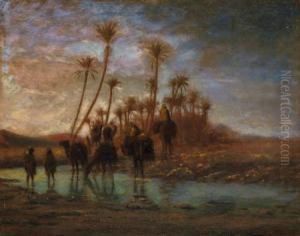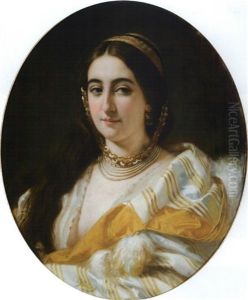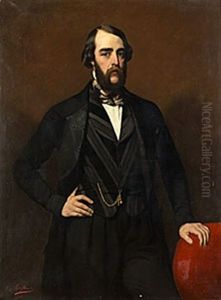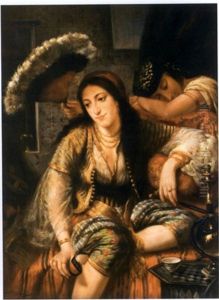Ange Tissier Paintings
Ange Tissier was a French painter, born on February 17, 1814, in Bruges, France. He was primarily known for his historical scenes and portraits. Tissier was a student of the influential French painter Paul Delaroche, who was renowned for his meticulously detailed historical and genre paintings. Under Delaroche's guidance, Tissier developed a keen eye for detail and a strong grasp of historical context in his work.
Tissier's career flourished in the mid-19th century, a period that was characterized by a growing public interest in historical and narrative art, fueled in part by the Romantic movement. His paintings often depicted scenes from French history with a focus on the dramatic and emotive aspects of storytelling. Tissier's work was well-received in his time, and he exhibited regularly at the Paris Salon, the official art exhibition of the Académie des Beaux-Arts in Paris.
He gained recognition and was awarded medals for his submissions to the Salon in 1840 and 1846. Tissier's success at the Salon helped to establish his reputation as a skilled painter of historical genre. His portraits were also praised for their lifelike representation and psychological depth. This combination of historical painting and portraiture defined much of his career.
In addition to his painting, Tissier was also known for his role as a teacher. He imparted his knowledge and skills to a number of students, some of whom would go on to have successful artistic careers of their own. Tissier's influence extended beyond his immediate circle, as his works contributed to the broader trends in French painting during the 19th century.
Ange Tissier passed away on May 20, 1876, in Paris. Despite his success during his lifetime, Tissier is not as widely known today as some of his contemporaries. Nevertheless, his contributions to the art of the 19th century continue to be recognized by art historians, and his works are held in various museum collections, including the Musée d'Orsay in Paris.
